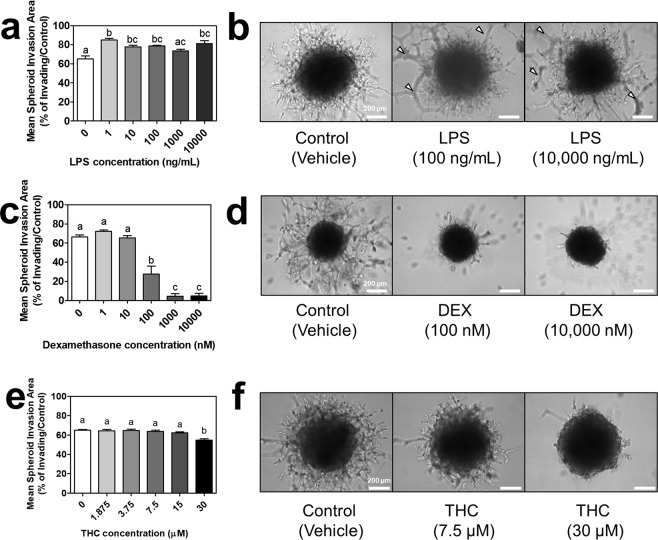Figure 7.
Impact of lipopolysaccharide, dexamethasone, or Δ9 – tetrahydrocannabinol on spheroid invasion. (a) Mean spheroid invasion areas of EVT spheroids treated with 1–10,000 ng/mL lipopolysaccharide (LPS) on day eight. (b) Brightfield images of EVT spheroids in ECM treated with the vehicle control, 100 ng/mL LPS, or 10,000 ng/mL LPS (three representative doses selected along curve to demonstrate effect). White arrows indicate examples of tube formation of EVTs that have invaded to surface of ECM. (c) Mean spheroid invasion areas of EVT spheroids treated with 1–10,000 nM dexamethasone (DEX) on day eight. (d) Brightfield images of EVT spheroids in ECM treated with the vehicle control, 100 nM DEX, or 10,000 nM DEX. (e) Mean spheroid invasion areas of EVT spheroids treated with 1.875–30 µM Δ9 – tetrahydrocannabinol (THC) on day eight. (f) Brightfield images of EVT spheroids in ECM treated with the vehicle control, 7.5 µM THC, or 30 µM THC. Significant differences between groups determined by one-way ANOVA followed by Tukey’s post-test; n ≥ 3. Significant differences between means as determined by post-tests were indicated by different letters. Images taken at 10x objective magnification. Scale bar represents 200 µm.

